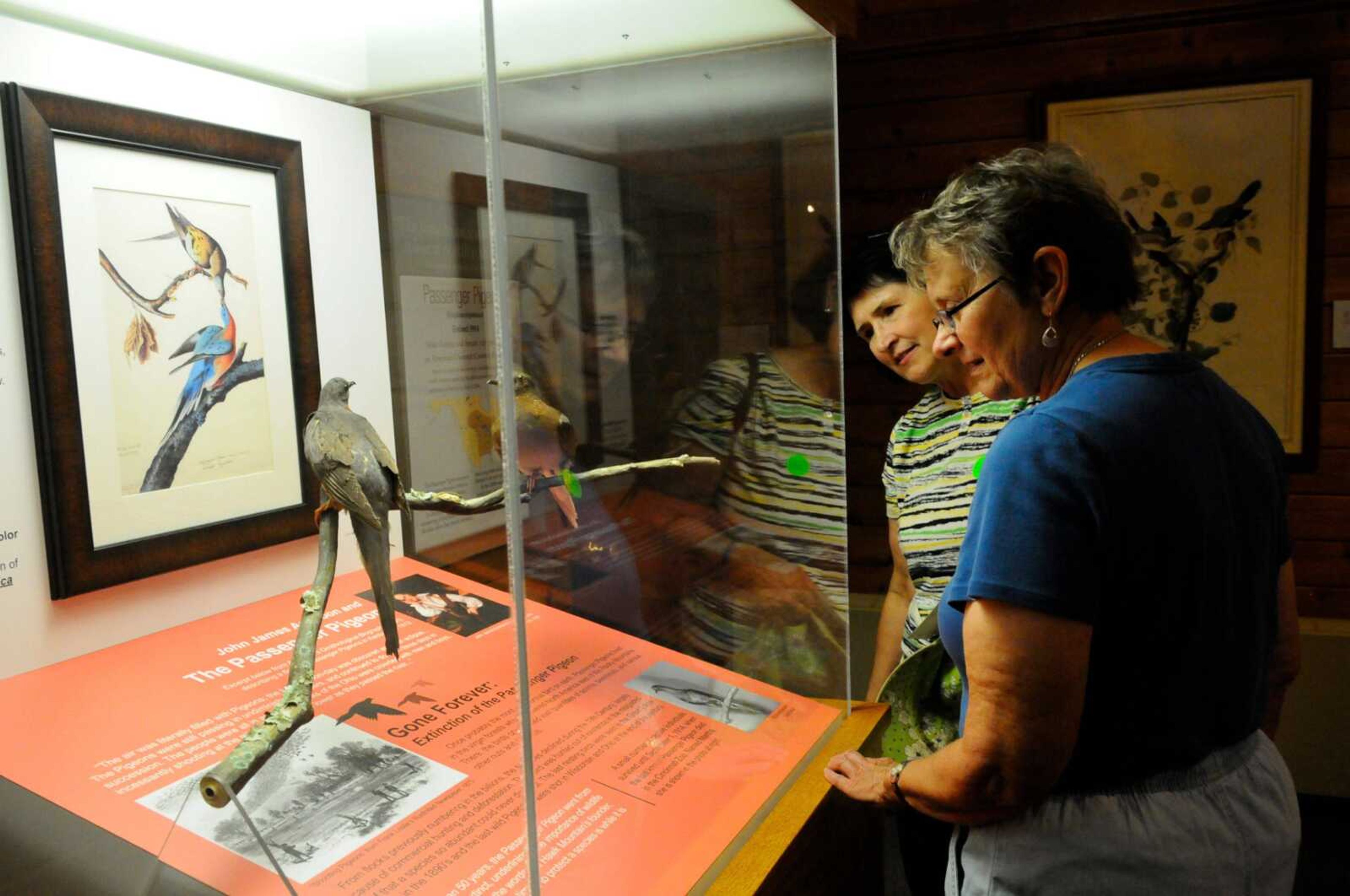This is the 13th in a series of articles with Kellerman Foundation for Historic Preservation board chairman Frank Nickell, an emeritus faculty member of Southeast Missouri State University, commenting on Show Me State history on the 200th anniversary of Missouri being received as America’s 24th state in 1821.
Like its predecessor the dodo bird, the passenger pigeon is now extinct, with the last known sighting in the wild of the red-eyed fowl believed to have been in New Haven, Missouri, 157 miles northwest of Cape Girardeau.
According to Otto Widmann’s book, “Birds of Missouri: A Preliminary Catalogue,” A.F. Eimbeck documented seeing the bird Sept. 26, 1902, in that small Franklin County city.
Staggering numbers
“No one at the founding of America would have ever believed (passenger pigeons) could become extinct, because there were so many of them,” said historian Nickell, citing one ornithologist’s suggestion as many as 5 billion of the creatures were in North America in the 1700s.
The bird, which bore a physical resemblance to the now-numerous mourning dove, received the appellation “passenger” because of its migratory habits.
“They would go north or south, they would use the flyway up and down the Mississippi (River),” said Nickell, adding, “when they did that, they would block out the sun.”
Ornithologists estimate as many as 40% of all the birds in flight in the year 1607 — the time of the founding of the first permanent English settlement at Jamestown, Virginia — were passenger pigeons.
“They were gentle, graceful in flight, communal, and when one got hurt, others would flock around the injured bird,” said Nickell, suggesting the propensity of the passenger pigeon to gather in tight flocks is key to understanding their eventual extinction.
“When they moved, it was like seeing a black cloud passing over your head, and because of their sheer numbers, could be heard miles away,” said the venerable historian, who noted very few passenger pigeons ever made it over the Rocky Mountains.
Hunting and habitat loss
“It’s the tragic story of what happens when the interest of humankind clash with the interests of nature,” Nickell said.
The passenger pigeon was good to eat and was easy to capture or kill, he added, with children able to receive as much as 50 cents for 100 of the birds.
“Hotels in Philadelphia, New York, Chicago and Pittsburgh would buy them by the ton and would feature the bird as a main entrée on their menus,” Nickell said.
While their numbers began to be reduced by hunting, another factor also led to the passenger pigeon’s early 20th century demise.
“When people in the Midwest cut trees down and cleared land for farming, there were no nesting places for the bird, their habitat had been decimated,” Nickell noted.
The passenger pigeon began eating crops in the field and farmers, seeing their livelihood threatened, began to kill them to be rid of them.
“They’d hire kids to go out and either wring the necks of the birds or kill them because they were just in the way,” Nickell said.
Unpleasant odors
“The manure from a million passenger pigeons was obnoxious for people and they were considered pests to be eradicated,” said Nickell, noting knee-high boots were often required to walk through what the birds left behind.
The final act
Martha, the last passenger pigeon in existence, died in 1914 at the Cincinnati Zoological Garden.
“She just fell off her perch; she was 29 years old,” Nickell said.
“There were billions of them when the U.S. began; there are none today,” he added.
Connect with the Southeast Missourian Newsroom:
For corrections to this story or other insights for the editor, click here. To submit a letter to the editor, click here. To learn about the Southeast Missourian’s AI Policy, click here.








